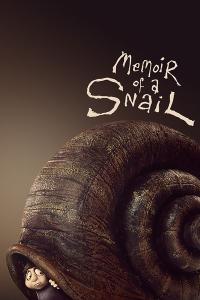Torrent details for "Visual Literacy Skills: How to See" Log in to bookmark
Controls:
Language:
 English
EnglishTotal Size:
8.30 GB
Info Hash:
9a1ca7cdb3b2b3f1cb3996dc5e83633fd9caae4a
Added By:
Added:
09-06-2021 04:58
Views:
581
Health:

Seeds:
0
Leechers:
0
Completed:
10

Description
For many of us, seeing really is believing. Your sense of sight is by far the most central and influential sensory apparatus you have. Science tells us that the eyes contain 70 percent of all the sensory receptors in our bodies, and that a full 90 percent of the information our brains process on a daily basis is visual.
This means that, to an astonishing degree, we know and navigate the world with our eyes. Visual perception plays a dominant role in how we experience life—from how we receive knowledge and information and how we perceive nature, art, and the world to the daily visual choices we make about how we present ourselves and how we live.
Unlike reading and writing, our educational system gives us little or no training for our all-important visual capacities, and we don’t usually cultivate the skills of visual literacy. Yet, to do that—to consciously develop your understanding of visual perception, and your ability to deeply observe, interpret what you see, and communicate visually—opens an extraordinary world of experience, deepening your perceptions on all levels, and your capacity to appreciate the richness of the world around you.
But visual literacy has an even greater urgency: The world is becoming increasingly visual. More and more, we purchase things of all kinds based on what we see, and most of the information we receive and make decisions with is visual. Within the huge amounts of visual input we receive, the boundaries between what is representation and what is illusion are increasingly blurred, and the ability of visual input to manipulate us is a fact of contemporary life.
In Visual Literacy Skills: How to See, taught by award-winning Professor Carrie Patterson of St. Mary’s College of Maryland, you’ll take a deep and detailed look at the principles and skills of visual literacy, and how these visual skills directly inform our experience. These 24 compelling lessons teach you the vocabulary of art—line, shape, space, texture, color, and more—and how to see and evaluate them, as well as how to understand and employ the principles of visual design. Further, this course grounds you in how visual perception and visual language operate in art, design, and media, knowledge which increases your powers of communication, deepens your insight into visual persuasion and manipulation, and refines your skill and pleasure in the multi-dimensional world of visual experience.
Whether you’re engaged in art or design, interested in building a personal brand, creating or re-doing a living space, or simply interested in enriching your skill in making visual decisions, this course trains you to see as artists, designers, and architects do, and helps you develop a life skill that has far-reaching consequences in the digital age.
Seeing through the Eyes of Artists and Designers
These lessons train you in a sophisticated level of visual literacy, not just in principle but in practice. The course opens with a deep dive into the physiology of vision, where you’ll explore the mechanics of your eyes, the sensorial experience of sight, and how the brain organizes sensation into coherent visual experience.
Then you’ll move into a deeper level of visual literacy. Here, you’ll uncover how artists and designers perceive and understand the visual world with the intention of creating visual objects and environments. You’ll observe how artists, designers, and architects communicatevisually, creating the visual messages that surround us and influence how we think and live. In the process, you’ll study the tricks of the trade for designing objects that combine function and visual appeal, art that explores the reaches of space and time, and architectural spaces that reflect cultures and shared values.
The final section of the course explores what it means to make your visual skills an integral part of your life. Here, you’ll discover how to develop habits that you, as a visually informed person, can cultivate to create an environment and lifestyle that reflects your unique view of the world, as well as your own style and perspective. By examining the methods and habits of creative people across various disciplines, you’ll build a foundation for any creative work you may undertake.
Visual Language and Visual Communication
Professor Patterson illustrates the course material with hundreds of vivid images, photos, and diagrams, as well as video footage and studio demonstrations. In learning and practicing the skills of visual literacy, you’ll delve into core subject matter such as:
The Phenomenon of Visual Perception. Building on the anatomy and physiology of sight, follow the complex processes through which the brain creates meaning from visual experience. Note how the way we interpret visual perception through our bodies lays the groundwork for how we interpret our own lives.
Representation vs. Illusion. Observe how we value both representation and illusion in art; how artists, designers, and photographers create illusion in their work; and how photography and screens alter our experience of the world. Grasp how media and visual communication can blur the line between fact and fiction.
Visual Foundations. Study visual syntax—the underlying structure of visual communication—across five lessons; delve deeply into the formal elements of art, beginning with line, shape, and value; also learn the principles of three-dimensional art and design, and investigate visual storytelling.
Visual Time. In a fascinating ramification of visual experience, observe how the element of time manifests in the perception of art; witness how artists evoke both fixed moments in time and the passage of time, and learn to express time visually.
Principles of Design. Investigate the core principles of visual design that are at work in the creation of any object or artwork, such as emphasis, balance, proportion, and scale. See how these elements work together in visual composition and communication, and learn to compose visually like an artist.
Build Habits of Creativity
In the final section of the course, Professor Patterson offers you a rigorous and penetrating look at the parameters of creativity. An engaging and informal speaker, her teaching reveals an amazingly detailed knowledge of the principles of art, design, and visual communication, together with far-reaching insight into the creative process, innovative thinking, and what it is to embody creativity in daily living.
Here, she offers you a rich range of methods for developing your own creative habits and practices. Among these, you’ll explore:
The Art of Observation: Study techniques for suspending ordinary visual perception, cultivating powers of detailed observation and alternative ways of seeing, and making active observation a valuable life skill.
Pushing the Limits of Thinking: Take a provocative look at how innovative thinkers intentionally seek out new ways of thinking about and seeing the world. Learn practical methods for becoming a visual explorer in your daily travels, and for generating original thought.
The Creative Act: Learn detailed guidelines for becoming a creator of your own art, design, or visual communication. Apply the skills you’ve built in exploring the inspiration, the joy, and the satisfaction of creative work.
Visual Literacy Skills: How to See takes you on a remarkable perceptual journey, revealing and unpacking visual experience to a depth that most of us rarely engage with. In looking deeply at how we experience reality through visual perception, and the extraordinary ways we benefit from refined visual knowledge as consumers, communicators, and creators, you’ll learn to turn your visual skills into a visually literate and enriched life.















































